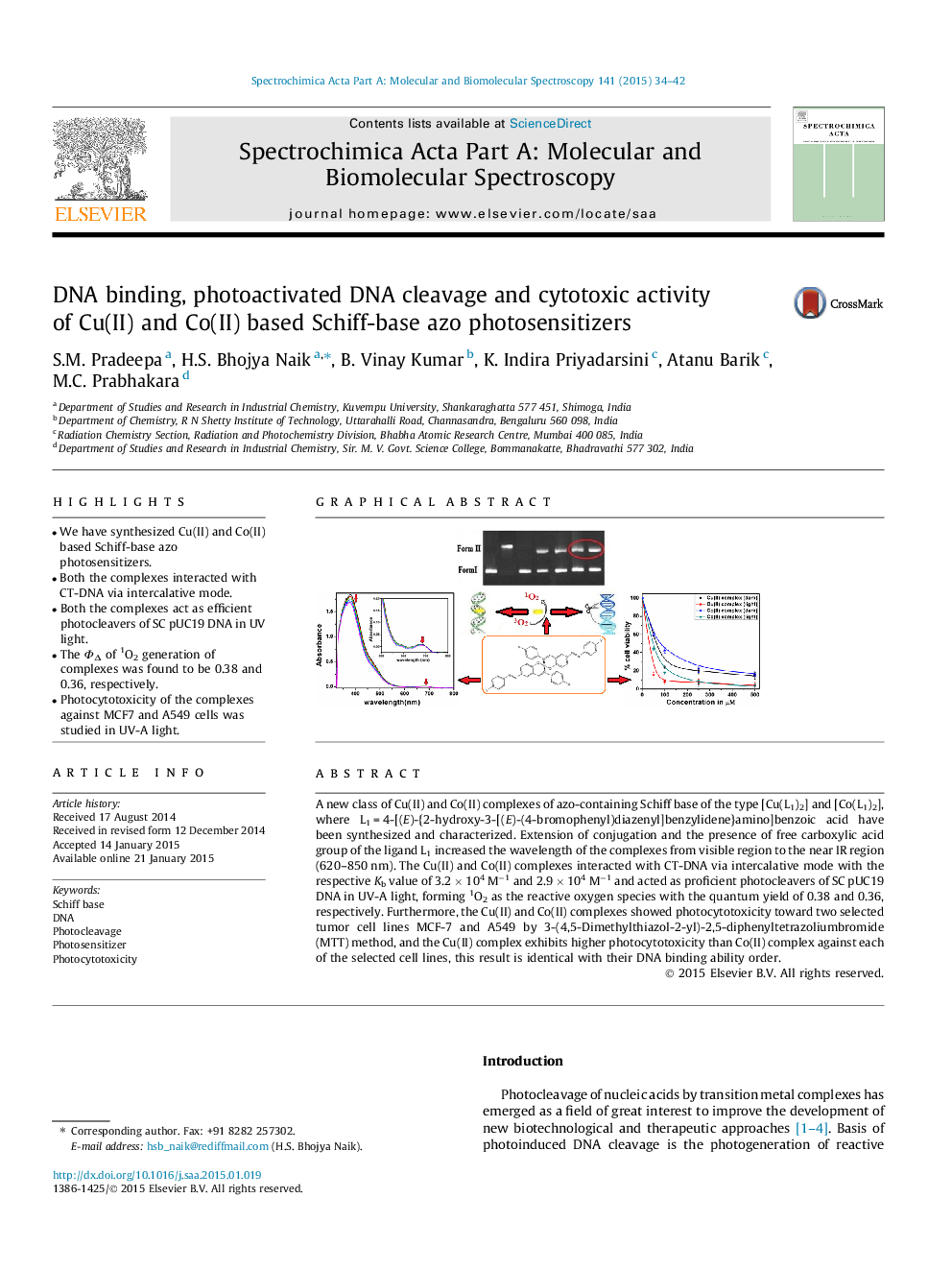| Article ID | Journal | Published Year | Pages | File Type |
|---|---|---|---|---|
| 1232383 | Spectrochimica Acta Part A: Molecular and Biomolecular Spectroscopy | 2015 | 9 Pages |
•We have synthesized Cu(II) and Co(II) based Schiff-base azo photosensitizers.•Both the complexes interacted with CT-DNA via intercalative mode.•Both the complexes act as efficient photocleavers of SC pUC19 DNA in UV light.•The ΦΔ of 1O2 generation of complexes was found to be 0.38 and 0.36, respectively.•Photocytotoxicity of the complexes against MCF7 and A549 cells was studied in UV-A light.
A new class of Cu(II) and Co(II) complexes of azo-containing Schiff base of the type [Cu(L1)2] and [Co(L1)2], where L1 = 4-[(E)-{2-hydroxy-3-[(E)-(4-bromophenyl)diazenyl]benzylidene}amino]benzoic acid have been synthesized and characterized. Extension of conjugation and the presence of free carboxylic acid group of the ligand L1 increased the wavelength of the complexes from visible region to the near IR region (620–850 nm). The Cu(II) and Co(II) complexes interacted with CT-DNA via intercalative mode with the respective Kb value of 3.2 × 104 M−1 and 2.9 × 104 M−1 and acted as proficient photocleavers of SC pUC19 DNA in UV-A light, forming 1O2 as the reactive oxygen species with the quantum yield of 0.38 and 0.36, respectively. Furthermore, the Cu(II) and Co(II) complexes showed photocytotoxicity toward two selected tumor cell lines MCF-7 and A549 by 3-(4,5-Dimethylthiazol-2-yl)-2,5-diphenyltetrazoliumbromide (MTT) method, and the Cu(II) complex exhibits higher photocytotoxicity than Co(II) complex against each of the selected cell lines, this result is identical with their DNA binding ability order.
Graphical abstractFigure optionsDownload full-size imageDownload as PowerPoint slide
